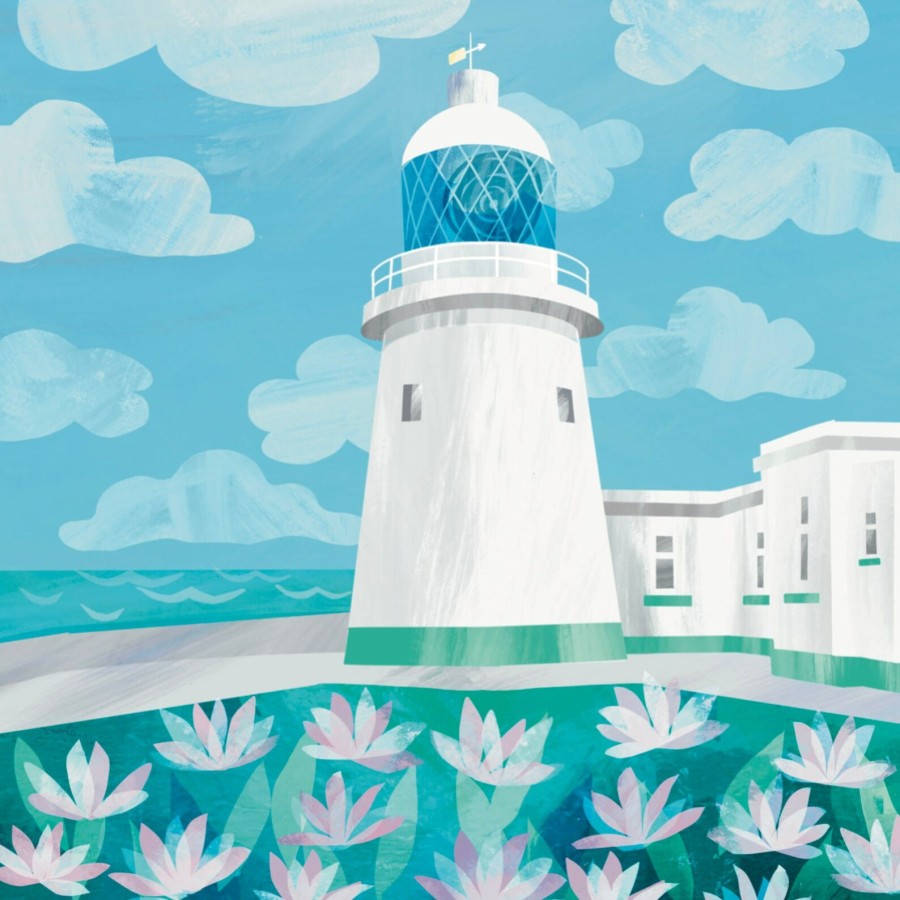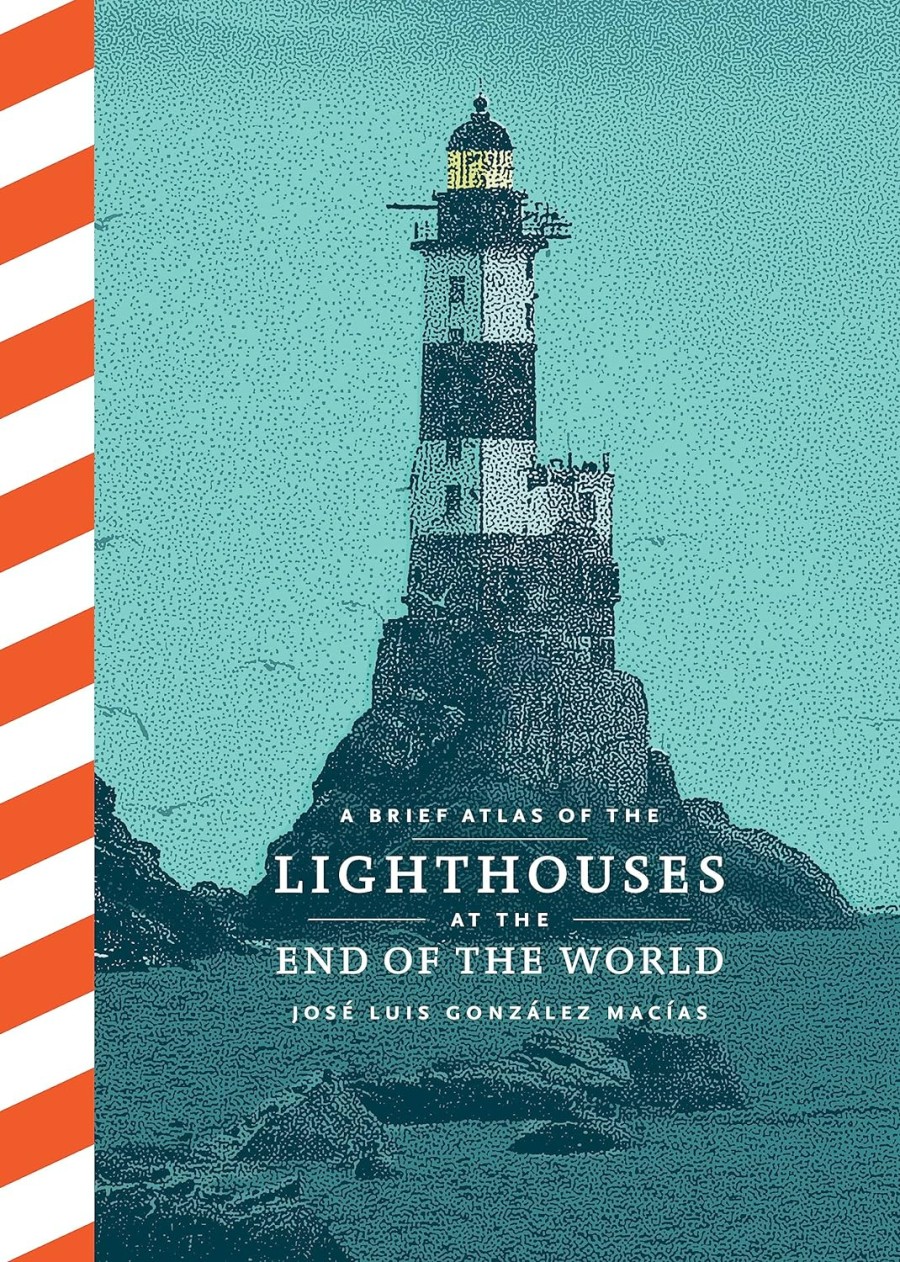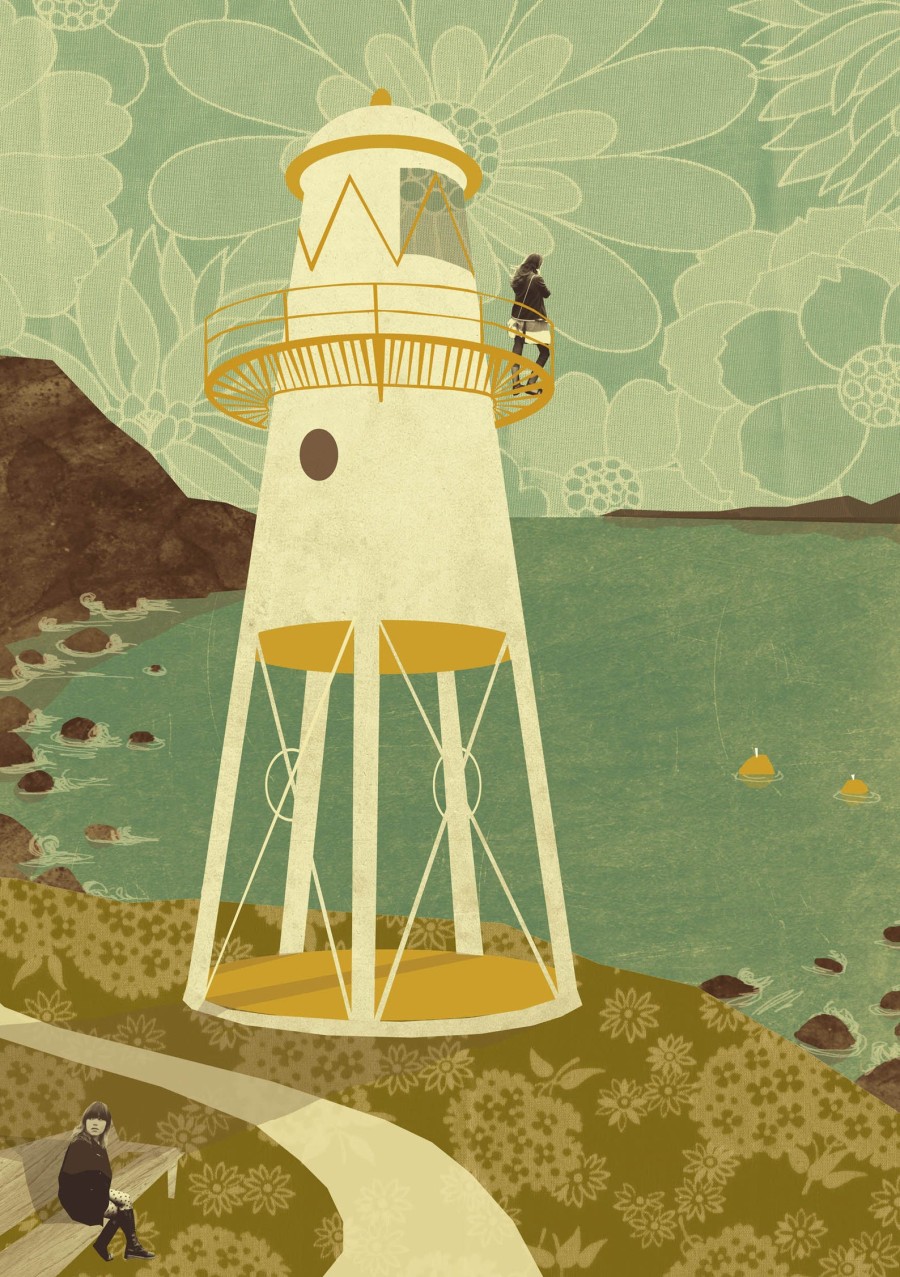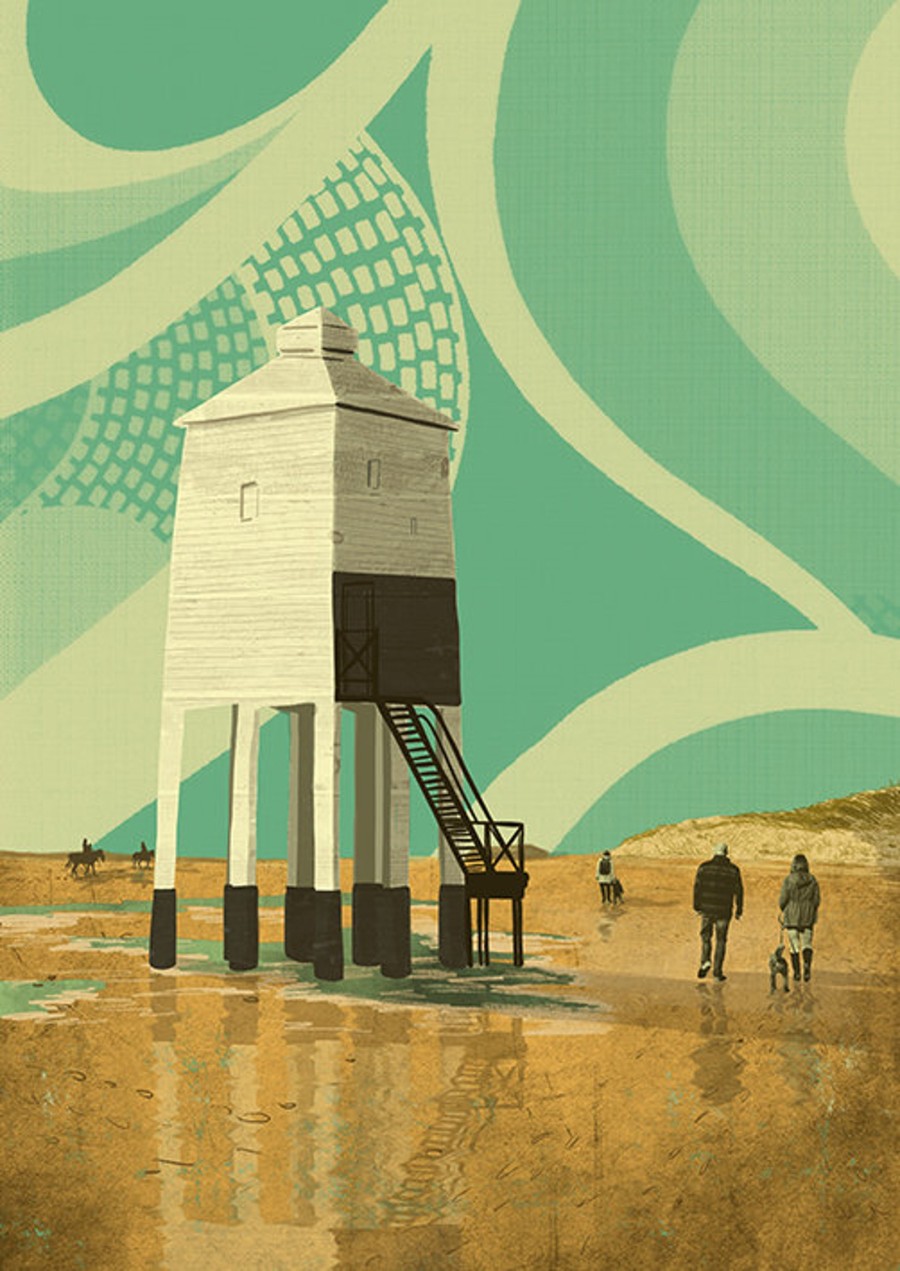
Smeaton’s Tower is the famed red-and-white lighthouse in Plymouth (Devon) that now runs on solar power, but was originally powered by candles and then oil lamps. Made from granite blocks (outside) and Portland stone (inside) it was built by talented civil engineers who designed many other lighthouses across England, to warn ships of rocks in the water. These seas used to be so treacherous that the original lighthouse had its 550lb fog bell torn off in a storm and had to be built again. Recently, a rare job came up as a lighthouse keeper, asking for someone with a good head for heights, happy to work alone, able to change lightbulbs and must like seagulls!
The Greenwich Lightvessel (situated off the Sussex coast) is a moving lighthouse that reports in every 12 hours, and marks the English Channel Traffic Separation Zone (France is north, England is south). It’s this ship that is used by the Met Office to bring the daily Shipping Forecast. For more information on lighthouses (of all shapes and sizes), visit Trinity House (which also is a charity that helps old seafarers).
Although today there are less ship disasters, they still happen. England’s own version of the Exxon Valdez oil spill happened in 1967, when a tanker struck Pollard’s Rock in Cornwall, spilling millions of gallons of oil, which affected the coast in France, Guernsey and Spain. Recently, 4500 containers of Vanish stain remover washed up on a Cornish beach, after 18,000 fell off a container ship (so the rest are still at sea somewhere). The local sea turned pink, and thankfully many volunteers helped to clean up the sea, to help wildlife. However others faced fines, as they literally drove to the beach to pick up free bottles of Vanish, and drove them home. We have a long way to go.
A mystery remains in Scotland, when three lighthouse keepers mysteriously disappeared over 100 years ago (a bit like that film Picnic at Hanging Rock, they just vanished into thin air). There was talk of ghosts and foul play. But now, historians believe they know what happened. One of the lighthouse keepers had been unfairly reprimanded for losing some kit in a storm. They think it happened again, and he risked his life (not with success) to fetch it from flying away – and the other two lighthouse keepers tried to help him. It now seems it was simply a tragic accident.
an illustrated guide to Britain’s lighthouses
The Legendary Lighthouses of Britain is a gift book focused on 100 lighthouses, each one illustrated by award-winning artist Roger O’Reilly. A guide to the sentinels that guard our shores is ideal for anyone who loves walking, art or the seaside.
From the Lizard in Cornwall to Muckle Flugga in the northern Shetland Isles, you’ll also find forbidding rock stations that lie offshore in the path of ferocious and unforgiving seas. Learn about:
- Ardnamurchan (Scotland) – so remote that fresh fruits and vegetables (and a doctor) had to be shipped out to help the builders
- Trinity Buoy Wharf – a lighthouse in the heart of London.
- Lundy South (occupied by pirates in the 1600s) and in the 18th century was the base for an MP for Barnstable (and Devon’s most notorious smuggler).
Roger O’Reilly grew up near the Boyne Estuary lighthouse in County Meath, and ever since feels a sense of peace and reassurance with the warm glow of lighthouse beacons.

A Brief Atlast of Lighthouses At The End of the World is a charming unique illustrated exploration of oceanic beacons worldwide, and their haunted histories. There is something beautiful and wild in the impossible architecture of lighthouses, where keepers have saved countless lives from cruel seas. And while that way of life may have faded way (as the lights go out and the buildings crumble), the stories remain. This collection includes over 30 tales along with nautical charts, maps, architectural plans and curious facts. Read about the blind lighthouse keeper tending a light in the Arctic Circle, the young woman savings ships from wreck at age 12, the crew cut off for 40 days with meagre supplies and the lighthouse haunted by the clacking of a keeper’s ghostly typewriter
The book features tale of over 30 lighthouses including in Ukraine, France, Spain, Chile, Norway, The Netherlands, Rhode Island, the Bahamas, Somalia, Quebec, Denmark, New Zealand and some local ones too (Eddystone Lighthouse in Plymouth, Smalls Lighthouse in Wales and Bell Rock Lighthouse in Scotland).

Portishead Lighthouse (Somerset) was built in 1930 and began as a working lighthouse a year later. Facing the Welsh coast, it’s just a mile away from Blacknore Point Lighthouse. The lighthouse is unusual in that it sits on a black pyramid metal tower, loaded onto a concrete square base, linked to the mianland by a metal walkway. The surrounding waters are treacherous due to strong currents and a high tidal range, so no swimming is allowed.

Burnham-on-Sea (a coastal resort in Somerset) actually has three lighthouses (not all working), although this pretty ‘lighthouse on legs’ built in 1832 is the best-known, and is now a Grade II Heritage listed structure. Named one of the world’s most beautiful lighthouses, the ‘legs’ were added to ensure it was seen by all boats in the channel. Although it’s visited by thousands of walkers each year, it is still a a working lighthouse.





